Triumph Speed 400 Review
By Kris Hodgson, Images by Dean Walters
Triumph’s Speed 400 is very much in keeping with the modern classic Speed Twins, with which it shares the name, adding a new smaller and more affordable LAMS option ideal for new riders, and plugging somewhat of a gaping chasm in the models on offer by this particular brand. Sub $10K entry-level machines, check for 2024.
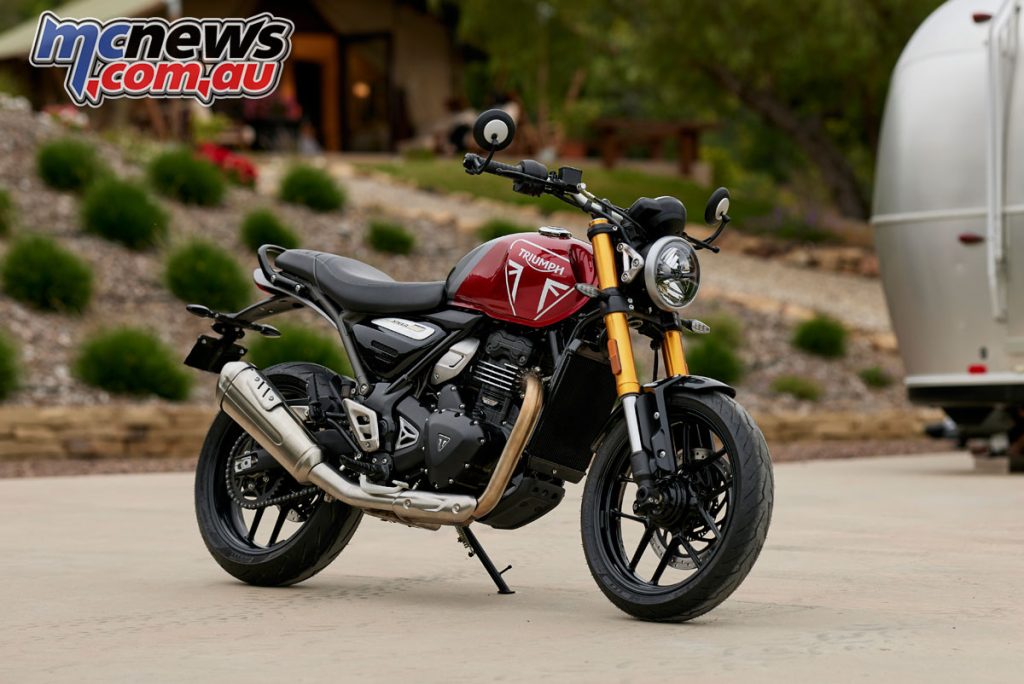
Iconically Triumph, we’re seeing bikes that are well deserving of the brand’s logo, being produced by Bajaj in India, representing Triumph’s iconic style and build quality. That’s a point worth extra emphasis; Triumph has clearly worked to ensure these offerings are at home alongside the rest of their range.
While there are far more similarities than differences with its sibling, the Scrambler 400 X, I found the two to be very distinct, with the Speed 400 really making the impact of the two, after spending a couple of hours and about 100 km on each of the bikes.
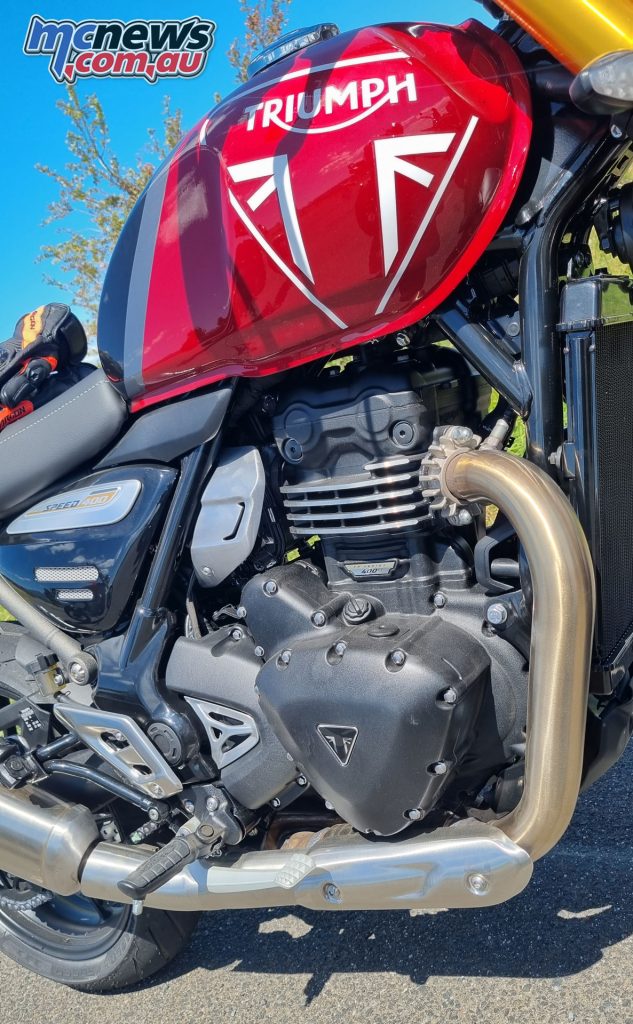
Having started the day on the Scrambler 400 X (review here), and getting the best roads on the Speed 400, that may be somewhat unfair, but here we are.
Swapping to the Speed 400 after lunch revealed a bike I immediately clicked with on pretty much every level. Granted seat comfort was a step down from the Scrambler, but it was hard to point to anywhere else I felt the Speed was left behind, and it wasn’t bad in this area. Just not as good as the Scrambler X.
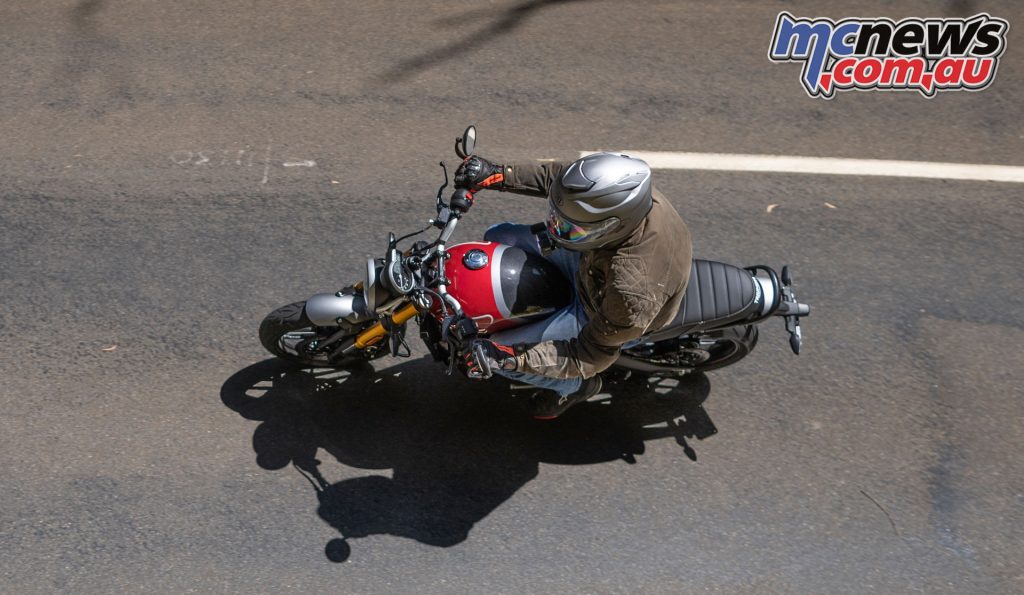
It goes without saying which will be the better bike for some light off-roading, so that may be a deciding factor for some, however on my end I was just focused on fun factor and the ride dynamic, where this bike delivered in spades.
What hit me first was the lower seat height, which felt more natural but also had me noticing the seat edges and reduced comfort. The comfort may have just been a by-product of already spending hours on the Scrambler, but it was noticeable. The flip-side to that? Shorter riders or new riders will likely be much happier and more confident on the lower Speed.
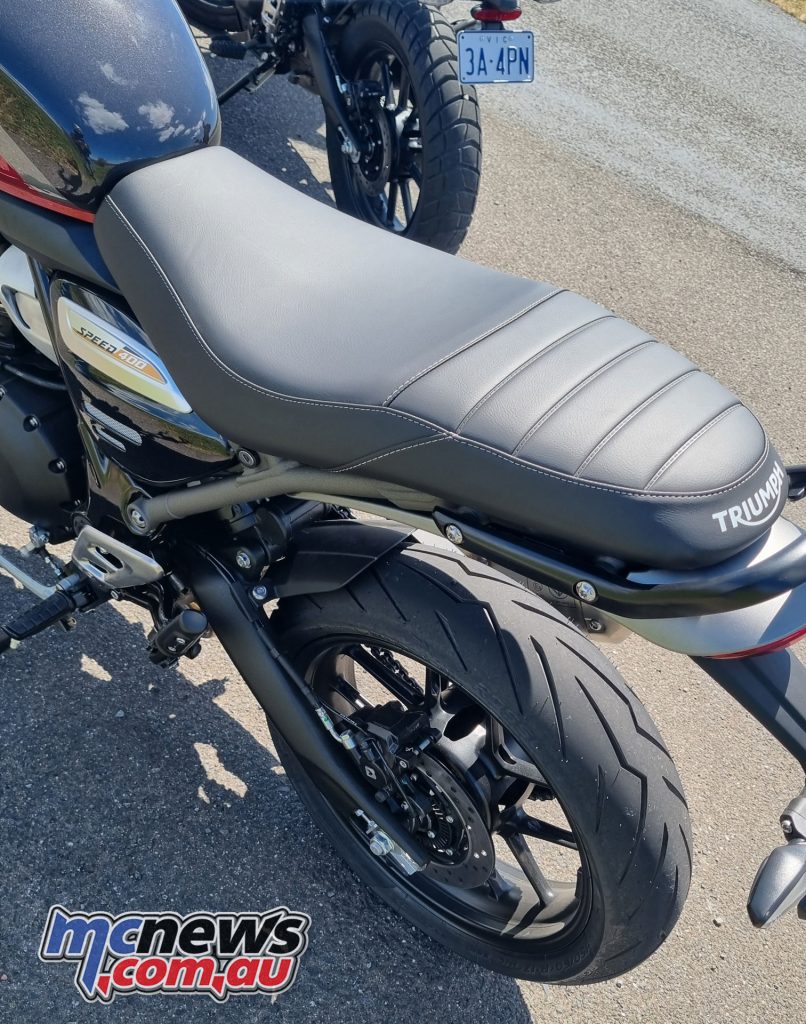
The bike also felt a bit more diminutive, despite some seriously wide ‘bars, further extended by ‘bar end mirrors, but that really worked in the bike’s favour. General rider fit for me was pretty much perfect, and despite feeling smaller, the bike still managed to retain that bigger bike essence.
The Speed 400 is obviously a roadster, 17-inch wheels, shorter travel suspension, less ground clearance, and to me, a more engaging ride. From essentially the second I cracked that throttle.
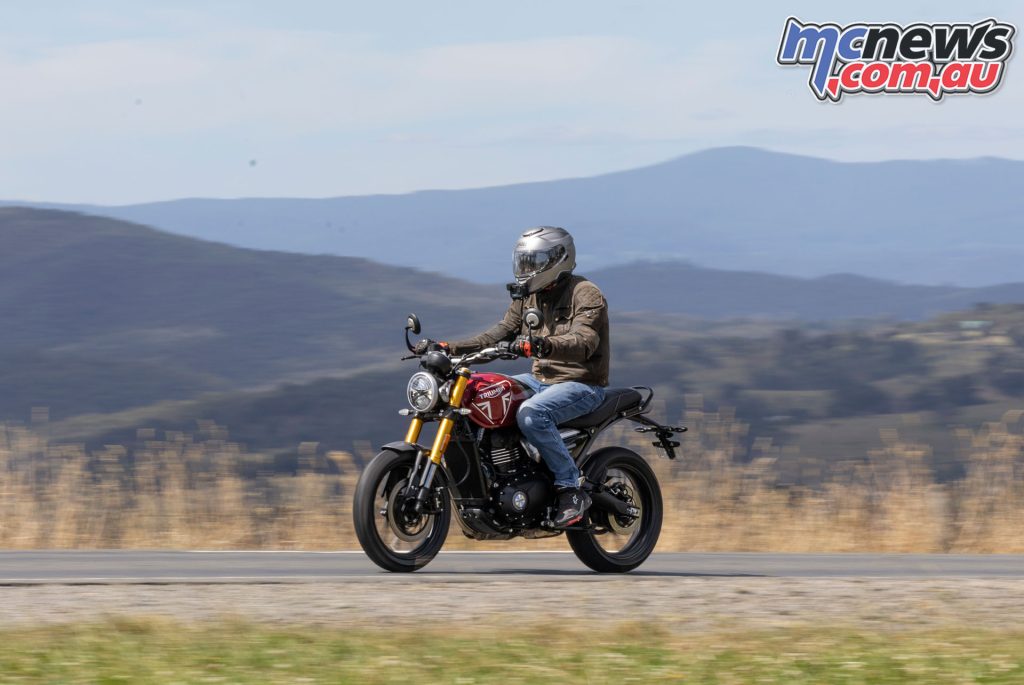
From what we were told the two engines are the same, but the slightly lighter (nine kg) Speed 400 was for whatever reason more responsive and lively from a throttle connection. The light clutch lever remained, care of a slipper clutch, and again initial brake inputs are measured.
Getting out of town couldn’t be easier, and immediately I felt a bit more compelled to ride aggressively on the Speed, with a more playful character no doubt helped by the wheels plus Rosso III tyres, and the bike being more balanced front to rear.
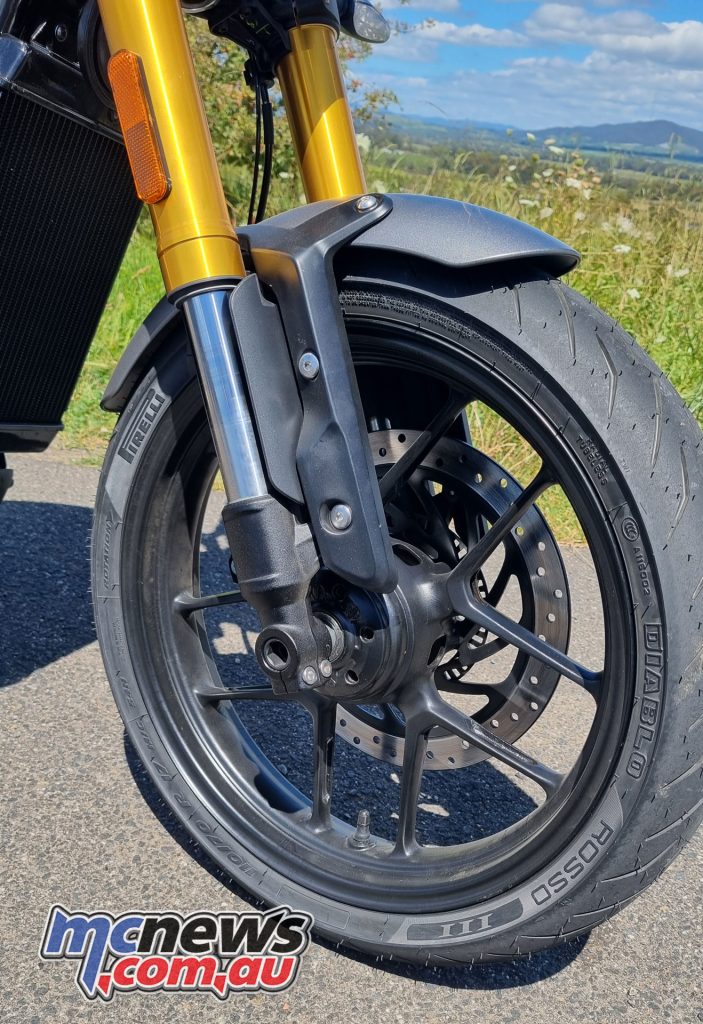
Those beefy 43 mm forks may not have been quite as forgiving as the Scrambler, and perhaps the shock wasn’t quite as supple, but for suburban riding, it was hard to complain as a 75 kg rider.
Of course, that was just my very first impression, and I hadn’t even got to the good sections of the road yet. I’d already crossed the Scrambler 400 X off the list of bikes I’d like to add to the garage and replaced it with the Speed 400.
Hitting the better twisties took things to the next level, however. The Speed 400 absolutely came to life, at 8000 rpm the engine is at peak intake warble, and right in the power band. Those wide ‘bars feel like a direct connection to the front wheel, and the bike effortlessly flicks from side to side through the twisties.
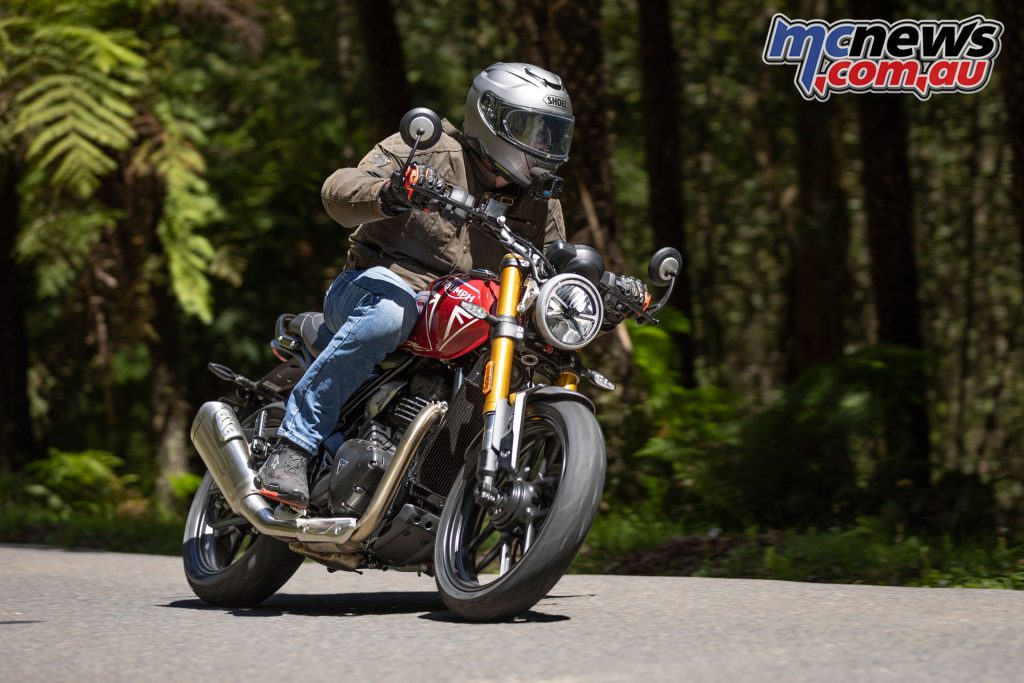
These were, to be fair, some seriously good sections of road, but to Triumph’s credit, they’ve created a bike which, at only 400 cc and under $9K ride-away, is going to seriously thrill new riders and was more than enough to keep me smiling from ear to ear.
The more planted feel of the Speed 400 and telepathic steering made keeping the throttle open and the speed on effortless, with some serious cred also going to those Rosso IIIs, which were in their element and represented a seriously good standard rubber choice on such a low-priced machine.
Trailing the front brake into corners was also more rewarding here, and I think I naturally had the front-loaded, with a tip in much more natural and easy. Where I’d been instinctively using a fair bit more rear brake on the Scrambler for stability that wasn’t necessary on the Speed, and the choice of line was much wider and more forgiving.
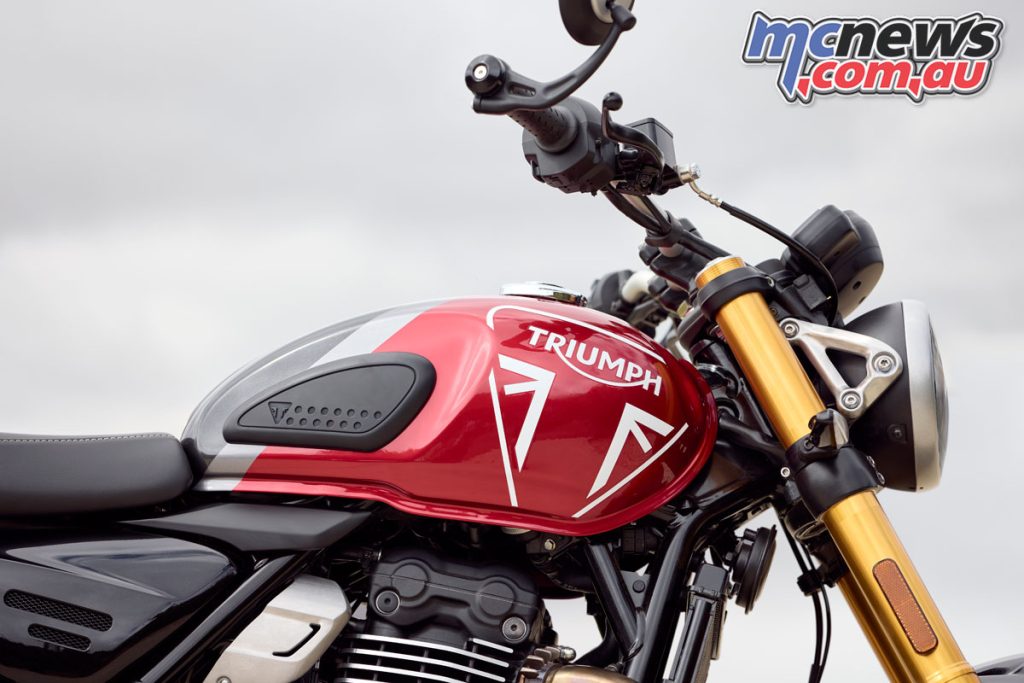
Obviously, the Scrambler has to give something away for the more off-road-orientated characteristics, but it surprised me a little the night and day difference. My only regret is not getting a chance to test both bikes through those sections for a fairer comparison.
I also made a mental note to test out the brakes in a little more heavy-handed manner than I normally would, and like on the Scrambler, the forgiving initial input quickly gives way to some serious stopping power, despite running a slightly smaller rotor than its sibling. Impressive and ideal for the inexperienced.
Despite being a largely one-size-fits-all loadout, it’s hard to criticise the suspension here, which feels particularly premium and well-damped, although usually at 75 kg, I fall right into the envisaged rider weight range. Where the roads did get bumpy, the rear remained controlled, and I could just ride through with confidence, knowing the Speed 400 would go where I wanted.
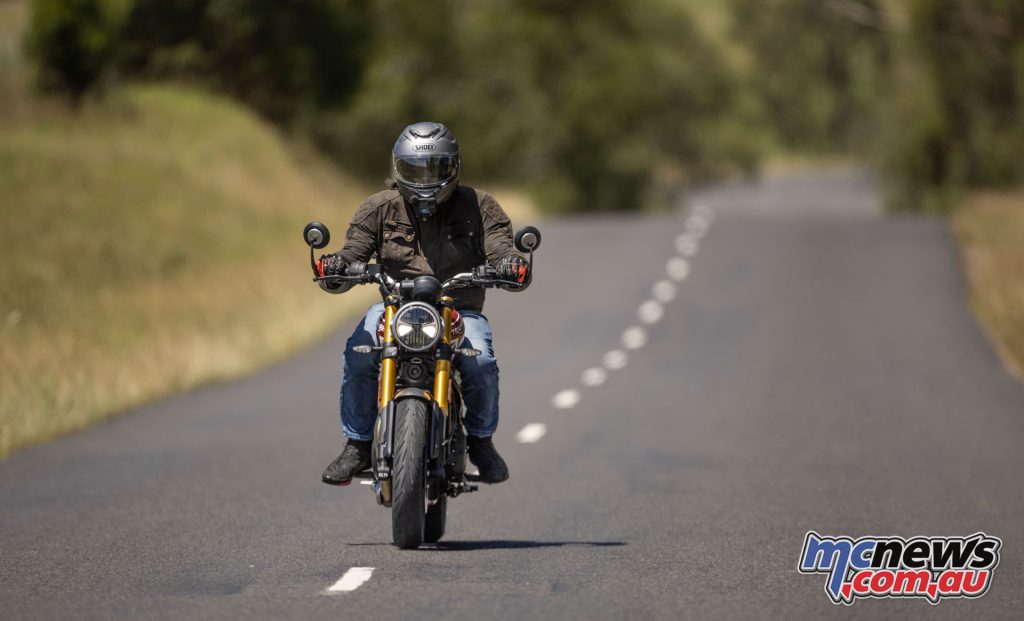
It’s probably worth mentioning that the Speed is in its element around the 80-120 km/h region, where you can take advantage of peak torque, with plenty left in the tank if you need to push the envelope a bit. However, I’d say performance has been prioritised around where it’ll be used most, alongside a more forgiving low-end. Remember that these bikes will likely usher new riders from day one of their L’s through up to three years of beginner riding, which is quite a range as abilities develop.
As far as complaints, with the same dash in use, I have the same complaint as on the Scrambler. I reckon it could have been better thought out. Analogue tacho, digital speedo, maybe a separate flashing light for the shift indicator.
I also noticed the mirrors tended to wander a bit, despite the ‘bar vibes being less noticeable than on the Scrambler, which may just be related to being ‘bar-end, not stem mounted closer in.
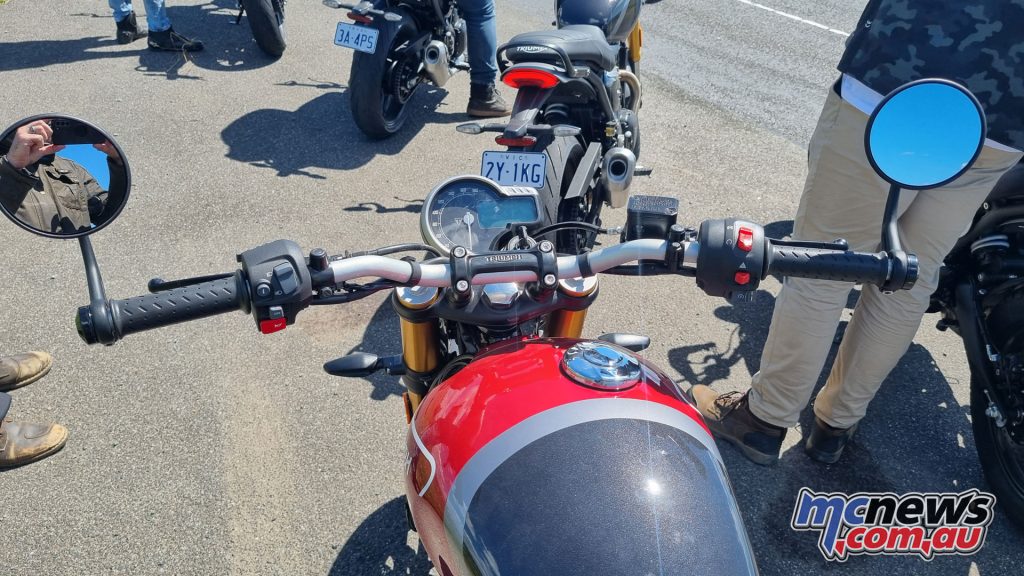
Highway riding was still a breeze heading back into Melbourne, and filtering wasn’t an issue despite the ‘bars and mirrors, although I can see them being more of a problem in some really tight situations, especially at home in Sydney. Being able to comfortably cruise at highway speeds is good to see, as while singles in this class tend to be capable, they can often feel a bit strained in these conditions.
I was ready to jump off the bike by the time we got into Melbourne after a last section filtering through a fair bit of traffic, so I think you’ll want your breaks off the bike, but really, nothing out of the ordinary for the class.
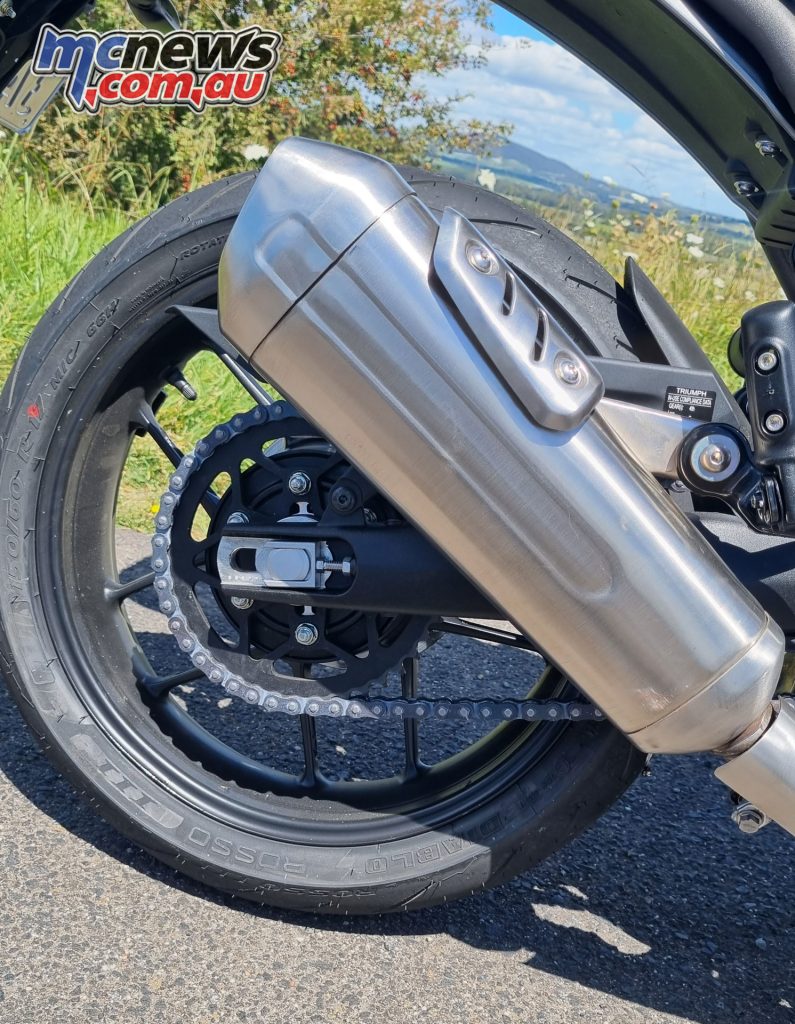
As far as competition, the Speed 400 stands apart, offering classic styling, Triumph build quality, and significantly better performance than the retro 350 class. That styling retains the point of difference to the plethora of thoroughly modern 400 cc options, and pricing is competitive enough that I think those who love the look will be swayed to pay that little more for the Triumph.
Overall the Speed 400 was a little ripper and an incredibly rewarding bike to ride. Unfortunately, that put the Scrambler 400 X a little in the shade as a result, certainly not because it was a bad bike by any measure, but the Speed just had a little spark of something special for me.
Obviously, I’m a little biased towards the smaller capacity machines; I own two 400s and really dig riding the smaller bikes hard, but I see the Speed 400 as a machine that would be both super rewarding to start on, and remain one that can still thrill as a more experienced rider, while feeling like a premium machine.
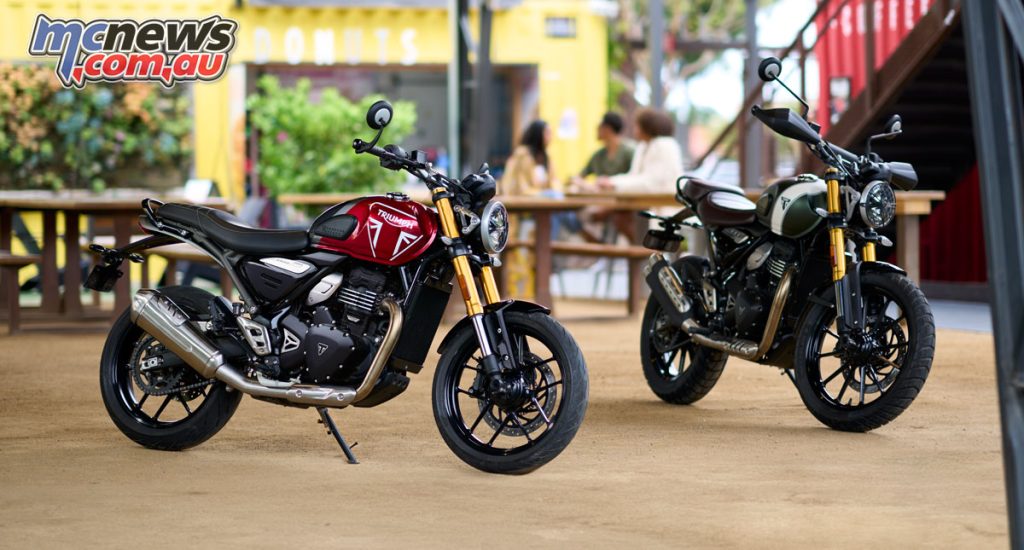
2024 Triumph Speed 400 Specifications
| 2024 Triumph Speed 400 Specifications | |
| Engine | Liquid-cooled, 4 valve, DOHC, single-cylinder |
| Capacity | 398.15 cc |
| Bore | 89.0 mm |
| Stroke | 64.0 mm |
| Compression | 12:1 |
| Maximum Power | 40 PS / 39.5 bhp (29.4 kW) @ 8,000 rpm |
| Maximum Torque | 37.5 Nm @ 6,500 rpm |
| Fuel System | Bosch electronic fuel injection with electronic throttle control |
| Exhaust | Stainless twin-skin header system with stainless steel silencer |
| Final Drive | X-ring chain |
| Clutch | Wet, multi-plate, slip & assist |
| Gearbox | 6-speed |
| Frame | Hybrid spine/perimeter, tubular steel, bolt-on rear subframe |
| Swingarm | Twin-sided, cast aluminium alloy |
| Front Wheel | Cast aluminium alloy 10 spoke, 17 x 3 in |
| Rear Wheel | Cast aluminium alloy 10 spoke, 17 x 4 in |
| Tyres | Metzeler Sportec M9RR |
| Front Tyre Size | 110/70 R17 |
| Rear Tyre Size | 150/60 R17 |
| Front Suspension | 43 mm upside down Big Piston forks. 140 mm wheel travel |
| Rear Suspension | Gas monoshock RSU with external reservoir and pre-load adjustment. 130 mm wheel travel |
| Front Brakes | 300 mm fixed disc, four-piston radial caliper, ABS |
| Rear Brakes | 230 mm fixed disc, floating caliper, ABS |
| Instruments | Analogue speedometer with integrated multi-function LCD screen |
| Length | 2056 mm |
| Width (Handlebars) | 795 mm |
| Height (Without Mirrors) | 1075 mm |
| Seat Height | 790 mm |
| Wheelbase | 1377 mm |
| Rake | 24.6° |
| Trail | 102 mm |
| Wet Weight* | 170 kg |
| Fuel Tank Capacity | 13 litres |










